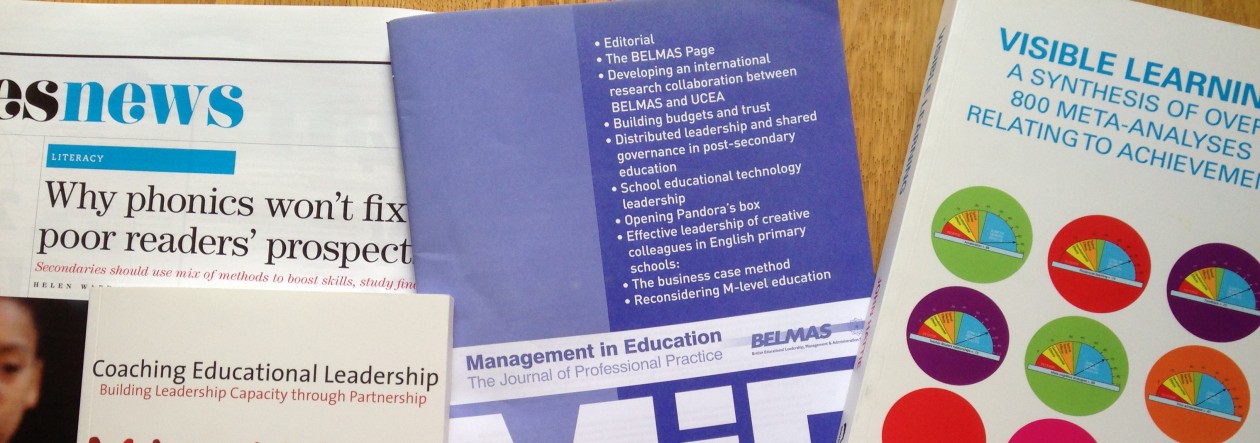Ofsted has identified 415 schools that have been in a cycle of low performance (i.e. less than ‘good’) for ten years or more. They are referred to as “stuck schools”. This is published in
Fight or flight? How ‘stuck’ schools are overcoming isolation.
The reasons Ofsted give for this is that:
- They are inundated with central and local government initiatives that failed to match up with the school needs. These are type A – “chaotic and change fatigued”.
- They often have a deep and embedded culture and an antagonistic union voice which makes them resistant to change. These are Type B – “resistant and embedded culture”.
It is pointed out (p.3) that in some areas, two whole cohorts of children have gone through all their primary or all their secondary school life without ever attending a school rated as ‘good’ school–that’s 13 years or more. [should this be primary and secondary school life, so that it adds up to 13?]
It is stated that these schools tend to be in deprived areas, but it is not an inevitability of poor communities because the majority of schools in the most deprived areas have shown that they can provide good or outstanding education despite their challenging circumstances.
Importantly it is noted (p.3) “that some of these good or outstanding schools have not always been so. Some of them have had difficult journeys with many different forms of intervention and support, and many different leadership strategies, finally coming together to make an impact.
The reasons that they have improved have been under-investigated and are therefore far from clear cut.”
So why do they think that some improve whilst others have been stuck for years?
Interesting and thought provoking comments from the report:
“Most stuck and unstuck schools stated that they had received too much school improvement advice from too many different quarters of the school system.” p. 4, pt 10. A reason for this: “a poor match between the problems of the school and the advice on offer.”
“Advice and support were perceived to have a greater impact when they were built into the school or MAT’s strategy and delivered internally. These schools, typically in MATs, also had stronger systems of accountability and oversight, which were a weakness among the other schools visited.” p. 4, pt 11.
“Five of the 20 schools invoked the phrase ‘dumping ground’ to refer to the children they had been given.” p.14, pt 62. Please read the comments from SLT of these schools. They talk about ‘dumping grounds’ and ‘the toilet of schools’.
Both stuck and unstuck schools were found to have three contextual similarities:
- poor parental motivation
- geographical isolation
- unstable pupil populations.
There is supporting detail to go with each of these.
p.15, pt 66 looks at Type A schools and suggests the problems lie in:
? unstable leadership
? unclear direction for school oversight
? inexperienced teacher workforce.
Again, there is supporting comment for each section, but this is worth highlighting here: “These stuck schools have very unstable leadership, with a change of headteacher on average every one to two years.” p. 15, pt 67
“One teacher in a stuck school commented: ‘In the last seven years, we’ve had four headteachers. We’ve looked like we’re joining three different MATs.’ (Teacher, School 8a)” p16, pt 71
For Type B schools, the impact of ‘antagonistic union voice’ is explored. It is stated that:
“… headteachers in unstuck schools have been prepared to have difficult discussions when needed,” whereas those in stuck schools were not engaging in the same way (and the possible reasons given).
p.20, pt 81 “Much of the literature on school improvement warns against schools trying to implement too many strategies at once. Research has instead concluded that focusing on a small number of core goals is more effective. Indeed, this was a main finding of our 2010 evaluation of the national strategies, which found that: ‘the frequent introduction of new initiatives, materials and guidance led to overload and diminished the potential effectiveness of each individual initiative.’”
